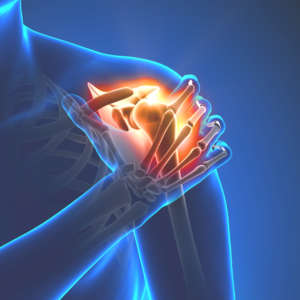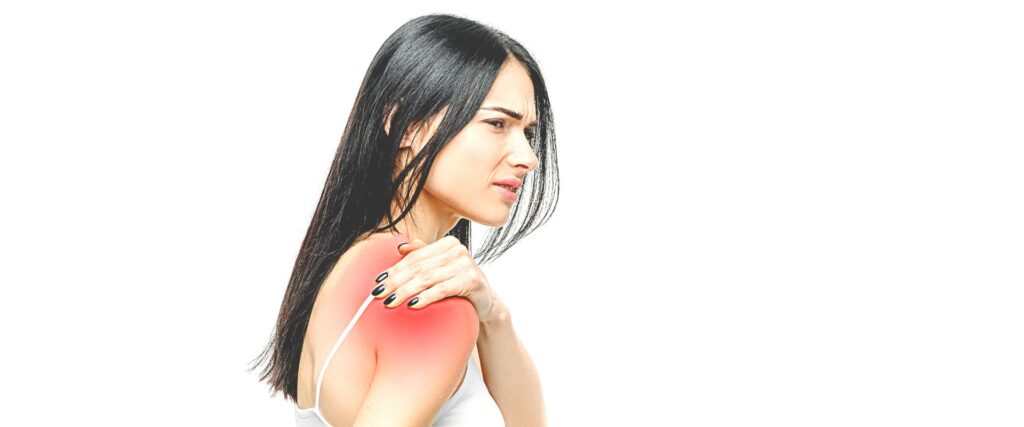
CAUSES OF PAIN UNDER YOUR SHOULDER
The human body has a lot of muscles, and they are used to perform many activities. The shoulders are one of the most important muscle groups in the body because it helps us with our arms and movements. These muscles do so much for us, but if we don’t use them correctly or use them incorrectly then they can cause pain in our back and shoulders. Let’s see some examples of how shoulders pain can be minimized and understand what the consequence are if we don’t pay attention on to it.
The shoulder blade is a very important part of your body. The reason why the shoulder blade is so important is because it serves as a protection for your shoulders, and also helps in keeping them aligned properly. It also acts as a stabilizer to help keep you upright while you are walking or running. It also provides support to your arm and chest muscles, therefore allowing you to do more activities with ease. Therefore, if there happens to be any pain under your shoulder blade then this could translate into several problems such as instability of the scapula (shoulder blades), which may make it difficult for you to move around freely or even walk at all, muscle strain that can result from poor posture which again will prevent movement and lead to an inability.
Overuse Painting a ceiling, helping a friend move furniture, or participating in a volleyball or basketball league are all examples of activities that can put your upper back and shoulders through more work than they’re used to doing.
Lifting objects overhead that are too heavy can strain muscles or sprain ligaments, or potentially injure the shoulder joint or spine, which could refer pain under or near the shoulder blade. So, let’s recap: It is not a good idea to lift something heavier than you can safely lift. You should also avoid lifting something that isn’t as heavy as it looks or feeling around with your hand when the item you are trying to pick up is too heavy. If you find yourself in such a situation, and if your arms feel like they’re going to explode, stop immediately and ask someone else for help.
The best way to go about picking up items from the ground without injuring yourself is by using the strongest muscles of your back (the posterior deltoids) and spine (the thoracic erectors) and please engage your core to release the pressure off from your spine.
APPLY ICE AND/OR HEAT
Yes, applying heat and/or ice can be a good way to relieve pain. But it is important that you follow the instructions on how to apply the treatment properly. Although Ice and heat can be a good way to relieve back pain.
In the past, doctors would recommend that patients who were suffering from back pain should rest for at least one day in bed. The idea was to give yourself time to heal before you get up and start moving around again. Ice and heat are both good ways to relieve back pain.
The key is to do the right kind of activity for the right amount of time. If you have a sprain, ice can give you relief. But if it’s a strain or muscle tightness, heat will be more effective. You should not use these treatments without medical supervision.

REST YOUR UPPER BACK FROM ACTIVITY
Your upper back is made up of the scapula and the clavicle. These bones are connected by a series of muscles, tendons and ligaments that allow you to lift your arms overhead, rotate your shoulders forward and backward, twist your elbows inward and outward, as well as move them side-to-side in a smooth manner. If these muscles become overworked or injured from activities like lifting heavy items or excessive bending over to pick things up (like laundry), they can cause pain in your upper back. As long as you don’t bend down too far or do something very strenuous that causes strain on these muscles when you’re standing upright (such as picking up an object while standing), resting them will help lessen any discomfort they may be causing.
IMPROPER LIFTING TECHNIQUE AND POOR POSTURE CAN INCREASE YOUR BACK PAIN

People should focus on proper lifting technique, rather than trying to avoid injury altogether. Build awareness and a better understanding about your limitation and how it can be improved is a better way to go. Pilates can help you navigate through this journey.
Poor Posture can be a big contribution for back pain or shoulder pain. At the Pilates Carioca Wellness and Training in Victoria, BC frequently, we are receiving clients complain about pain on their shoulders and lower back and at the majority of the time we can minimize their pain with some Private or Semi-Privates Pilates sessions in a personalized way.
Nowadays we spent many hours on the computer and with cellphone in our hands, and it can cause seriously complication to our body. For example, when a person’s lower back relaxes, and their head leans forward after many hours in front of the technology. A slouched posture is not very good for the body. While this position can look relaxed, it puts all the weight on one shoulder and makes that shoulder tire out more easily.
Hunching your back, tilting your head down, or sitting to one side. while working behind a desk or reading from a cell phone, for example: can weaken your muscles and place pressure on spinal discs, muscles, and ligaments.
Prolonged sitting with poor posture may cause your spine to undergo structural changes that eventually cause pain underneath the shoulder blade. Take a break from the computer couple time a long of the day.
Slouching can cause: Your back to be bent forward – this causes pain in the upper back and shoulders. It also puts stress on your lower spine causing you to arch when standing or sitting up straight. Finally, it can cause your neck to round forward which puts stress on the cervical spine. – this causes pain in the upper back and shoulders. It also puts stress on your lower spine causing you to arch when standing or sitting up straight. This makes it more difficult for you to perform everyday activities such as driving or working at a desk.
In summary tight muscles and poor posture can cause your back to hurt.
Try to use Thera-band or foam-roller for simple stretches for the upper body to help you get rid of that pain in your shoulder blade area. If you still have pain, just write to us and we can help you with more information.